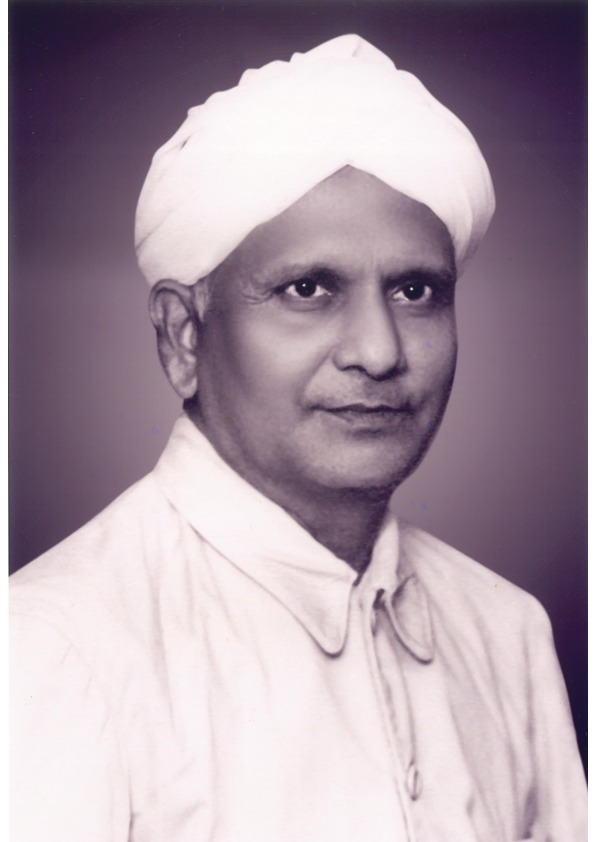
In this 125th birth anniversary year of RV, Bhāvanā takes pleasure in featuring three articles on his life and work. Beginning with an obituary tribute by A. Narasinga Rao (founding Editor of The Mathematics Student that started in 1933) and V. Ganapati Iyer, to their revered colleague, reprinted from the 1961 edition of The Mathematics Student, the recollection by C.S. Seshadri who saw RV for the first time while still a student doing his B.A. in Loyola College in Madras, and the article recalling the integral personality of RV by his grandson V. Balaji, a Professor of Mathematics at the Chennai Mathematical Institute, are both specially composed for this special offering by Bhāvanā.
A. Narasinga Rao and V. Ganapati Iyer1
Sri R. Vaidyanathaswamy was born in the year 1894 in the village of Sethalapathy on the banks of the river Arasalar in the Tanjore District. He was the eldest of four sons and three daughters. His father Ramaswamy Iyer was an orthodox Brahmin of the traditional type, well-read in Samskrit lore but without English education. The family owned some landed property which gave them a moderate income, and this enabled Vaidyanathaswamy to have his school education in Mayavaram and later in Madras Pachaiappa’s High School whence he matriculated. He then joined the Madras Christian College for his Intermediate in Arts course and after its successful completion in 1912, joined the Presidency College, Madras, in B.A. (Hons.) class in Mathematics. He was awarded the B.A. degree in 1915 and two years later he successfully passed the postgraduate Master of Arts examination.
After serving for a brief period as a teacher, Vaidyanathaswamy obtained a research scholarship of the Madras University and worked there for four years. He then went to the United Kingdom with a scholarship from the Madras University and worked with Prof. H.W. Turnbull of St. Andrews, Prof. E.T. Whittaker of Edinburgh and Prof. H.F. Baker of Cambridge. His papers on binary and double binary forms obtained him the Ph.D. degree of St. Andrews University, while his studies on the pedal correspondence, the general (m,n) correspondence and on mixed determinants, earned for him the D.Sc. degree of the same university.
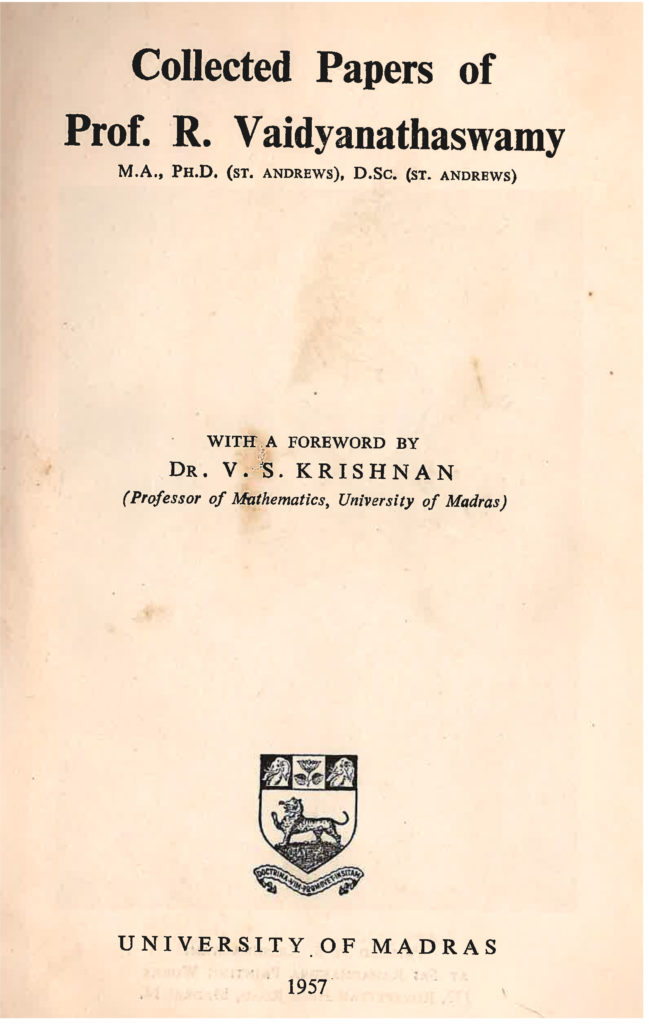
After three years’ stay in the United Kingdom, Dr. Vaidyanathaswamy returned to India in 1925. After teaching for a year at the Banaras Hindu University, he took charge of the newly formed Research Department of Mathematics of the Madras University in 1927. From this date till his retirement in 1952, he served Madras University conducting and guiding research and lecturing on many basic modern disciplines like Logic, Set Theory, Lattice Theory, Topology, etc. He published in 1947 a Treatise on Set Topology, the first book on the subject published in India, in which he made partial order and lattice theory the basis of the whole treatment. After retirement from Madras University, Dr. Vaidyanathaswamy worked for some years at the Statistical Institute at Calcutta and later at the Sri Venkateswara University at Tirupati. He died at Madras on March 17, 1960. His collected mathematical papers were published by the Madras University in a volume of 589 pages in 1957.
Sri Vaidyanathaswamy’s graduation took place at a time when the idea of research in mathematics was still something novel and mathematical ability was equated to a facility in solving problems. It is true that Ramanujan had just then blazed out a trail for himself and had returned to India full of honours, but immediately thereafter he went into a nursing home and died. However, his was a lonely trail. Several brilliant Indians had passed the Cambridge Tripos and some had even won the coveted Senior Wranglership or the Smith’s Prize but few of them were interested in mathematical research.
The Indian Mathematical Society founded by V. Ramaswamy Iyer was then about a decade old, and the papers appearing in its Journal related mostly to problems on the geometry of the triangle, analytical geometry, differential equations and other subjects of the college course.1 Indian universities were all busy with conducting examinations and awarding degrees. There was no regular teaching in the universities and there were no university professors to suggest lines of research.

In such an atmosphere it was natural that young Vaidyanathaswarny should have had to rely on himself for gaining a mathematical education from the available books and periodicals and for discovering worthwhile problems for investigation. Since geometry was the subject which received the greatest attention in South India at that time, it is not surprising that many of his early papers and a good deal of his later work should have a geometrical basis. In fact, references to the pedal line property of the triangle and its generalisation to a cyclic n-gon, normals from a point to a conic and to a quadric, porisms of triangles and polygons inscribed in one conic and circumscribed to another, the rational normal curve and incidence results in n-dimensions and similar topics figure largely in his papers. But he was not interested in studying generalisations suggested by such problems either by the plodding methods of analytical geometry or the blind gropings of classical pure geometry. At quite an early stage he became intensely interested in the theory of forms binary, and multiple binary forms and their invariant theory, and made an excellent study of classics like Algebra of Invariants by Grace and Young and Invariententheorie by Weitzebock, and acquired a good mastery of the methods of symbolic calculus. Consequently, these problems from elementary geometry were raised to a higher dimension by being transformed into problems on correspondences, transformations and invariant theory.
His general method of procedure appears to be something like the following. First, study all the available literature on a topic, then reformulate a geometrical problem from the point of view of correspondence theory and allow the work to proceed on natural lines as far as it will go. The underlying geometrical basis allows these form-theoretic results to be interpreted in terms of geometry and suggests further work in geometry. This work in geometry, in turn, suggests further investigations on the form-theoretic side. This interplay is pushed as far as possible and all the suggested lines of work carried out before the results are embodied in a paper of great elegance. His papers could be studied ab-initio and embodied all the known results and several new ones in a unified manner.
The distinguishing features of Dr. Vaidyanathaswamy’s treatment in this heavily worked field are the effective use of canonical forms, the parametric treatment of Poncelet’s theorem and the explicit use of the operational calculus. The study of these various special cases led him to formulate concepts for the general (m,n) correspondence.
One of Dr. Vaidyanathaswamy’s most interesting investigations is the memoir on desmic tetrahedra, which is unfortunately not included in his collected papers. The investigation goes deep and brings out in a very attractive presentation the many-sided beauties of this configuration. An interpretation in terms of circles is embodied in a paper “On four mutually orthogonal circles” and gives a beautiful configuration of three sets of four mutually orthogonal circles symmetrically related to each other, albeit some of them being imaginary.
It is easy to dig in a newly discovered gold mine and bring out shining nuggets, but the author’s application of new methods and ideas to such topics like the pedal line pristic polygons which have been the subject of study for many centuries is like one locating a nugget right under the feet of thousands of passers-by on the main roadway.
Dr. Vaidyanathaswamy’s papers are characterised by great clarity of presentation, a natural and independent line of approach, a start from the fundamentals of the problem so that each of his papers can be studied ab-initio without previous preparation, and an earnest attempt to incorporate all known material, and much that is fresh, in a unified treatment.

Among the other geometrical investigations of Dr. Vaidyanathaswamy which are noteworthy, one may mention papers on the rational norm curve in n dimensions, papers on the incidence relations of regions in hyperspace particularly of simplexes doubly incident with a quadric and on the number of lines which meet four regions in hyperspace using Zeuthen’s methods of enumerative geometry, the remarkable quadrics of a space cubic, on Hart systems of circles, etc. He is at his best where geometry, invariant theory, algebraic correspondences all meet and have interplay with one another.
It has been said of the late T. Vijayaraghavan that he was interested more in theorems than in theories. It can be aptly said of R. Vaidyanathaswamy that he was more interested in unifying theories than in isolated theorems. This trait of his as a mathematician is seen in almost all his papers. His work on multiplicative arithmetic functions illustrates this talent to a high degree. The well-known identities \sigma_a(mn) = \sum \sigma_a(m/d) \sigma_a(n/d), where the summation extends over the common divisors d of m and n; s(s) s(s-a) s(s-b) s(s-a-b)/s(2s-a-b) = \sum \sigma_a(n)\sigma_b(n)/ n^s were the starting point of the investigations. He found that the clue to these identities lay in the notion of multiplicative functions of more than one variable. The paper on arithmetic functions in the Trans. Amer. Math. Soc. (1931. 33: 579–662) is a systematic development of multiplicative arithmetic functions of several variables and their behaviour under the operations of multiplication, convolution, composition and inversion. The whole problem is analysed, and significant notions like linear and elementary functions and generating series are introduced, and it is shown that well-known classical functions and results fall into a pattern in this general theory. This memoir has been the starting point of the work of many of his students on this subject.
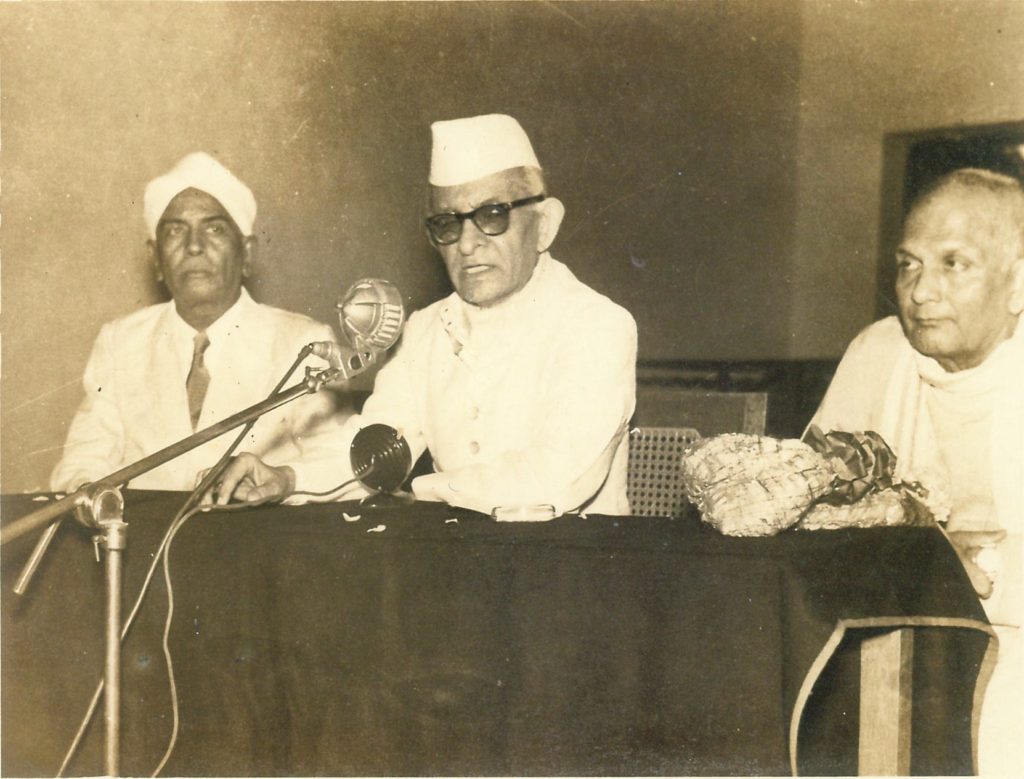
Dr. Vaidyanathaswamy was the first South Indian mathematician to undertake a serious and deep study of lattice theory and point-set topology. Besides the four papers on these topics found in the Collected Papers, his studies culminated in his book A Treatise on Set Topology. The point of view adopted in this work emphasises the lattice-theoretic character of topological structures.
Dr. Vaidyanathaswamy’s wide scholarship and his passionate belief that the various disciplines in mathematics are not isolated topics but form an integrated whole are further seen in his papers on group theory, Boolean algebra, symbolic logic and determinants. Let t_1=1, t_2,…,t_m=N be the distinct divisors of N and let C_i be the numbers not exceeding N and having t_i as its g.c.d. with N. These classes are disjoint classes and combine among themselves (mod N) for both multiplication and addition. This remarkable property proved by him is used to discuss the division of a finite group into disjoint classes which combine among themselves by the group operation, one such division being the cosets of a self-conjugate subgroup. The intimate relations between Boolean algebra and its generalisations with symbolic logic form the topic of the papers dealing with these subjects.
The foregoing brief survey shows that R. Vaidyanatha- swamy was a front-rank mathematician possessing a wide field of scholarship and interest. It also just happens that almost all the prominent South Indian mathematicians of the generation next to him are his pupils and have derived their inspiration from him, so that he could be regarded as having shaped the course of mathematical development in this part of India. He was very actively connected with the Indian Mathematical Society as the Editor of its Journal for several years and as President of the Society for several sessions. Each of his presidential addresses contains masterly surveys of different fields of mathematics.
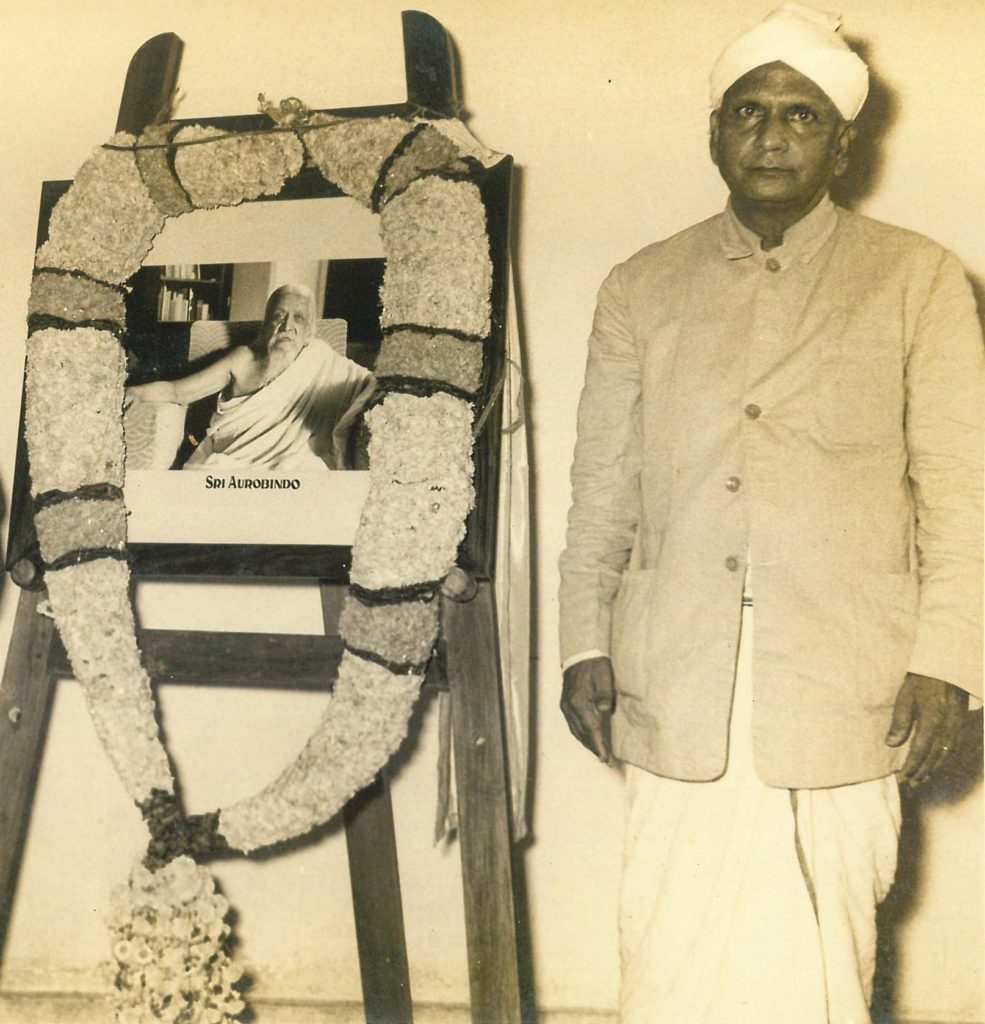
As a man, he was simple, even austere in his dress and habits. He was a strict vegetarian, never drank, rarely smoked and indulged in few luxuries unless betel and tobacco chewing and novel-reading be included among luxuries. Besides mathematics, he was keenly interested in Karnatic music and in yogic sadhana. He was a keen student of Sri Aurobindo’s Integral Yoga and was for some time Editor of a journal, Advent, devoted to the exposition of Aurobindo’s philosophy. He studied the Vedas in their original Samskrit text and believed with Aurobindo that there were deep inner meanings associated with them which modern Indians should seek to unravel. In fact, right up to a brief period before his death, he was giving lectures every week on the interpretation of some of the Vedic texts. Warm and loveable, dignified and cultured, there was nothing narrow in his outlook. He was ever ready to discuss difficult points and give helpful guidance to students whether his own or working elsewhere. He was not only a great mathematician but, what is rarer, a great man.
C.S. Seshadri2
I saw R. Vaidyanathaswamy for the first time when he gave an inter-collegiate lecture at Madras University when I was a B.A. honours student at Loyola College. Thereafter, I gave a talk at Calcutta at a conference which he attended. I still remember K.Chandrasekaran’s advice: Prepare well. The old man (RV) may still ask you searching questions. However, no question was asked. Then I met him at TIFR at the educational conference which took place after the colloquium on zeta functions. I didn’t talk to him on any of these occasions.
KC expressed his great regard for RV in numerous private conversations. I saw an illustration of this. During the Calcutta conference mentioned above, M.S. Narasimhan, Singbal and I were having tea with KC. RV was passing that way and KC invited him to join us. The deference and affection with which KC treated him could only have been surpassed by the way KC would have treated C.L. Siegel. During RV’s centenary year, I requested KC to send me an article on RV. He was very glad to oblige and this article appeared in Frontline. It is a beautifully written article and one cannot do anything better to get a good idea of R. Vaidyanathaswamy’s multifaceted personality.

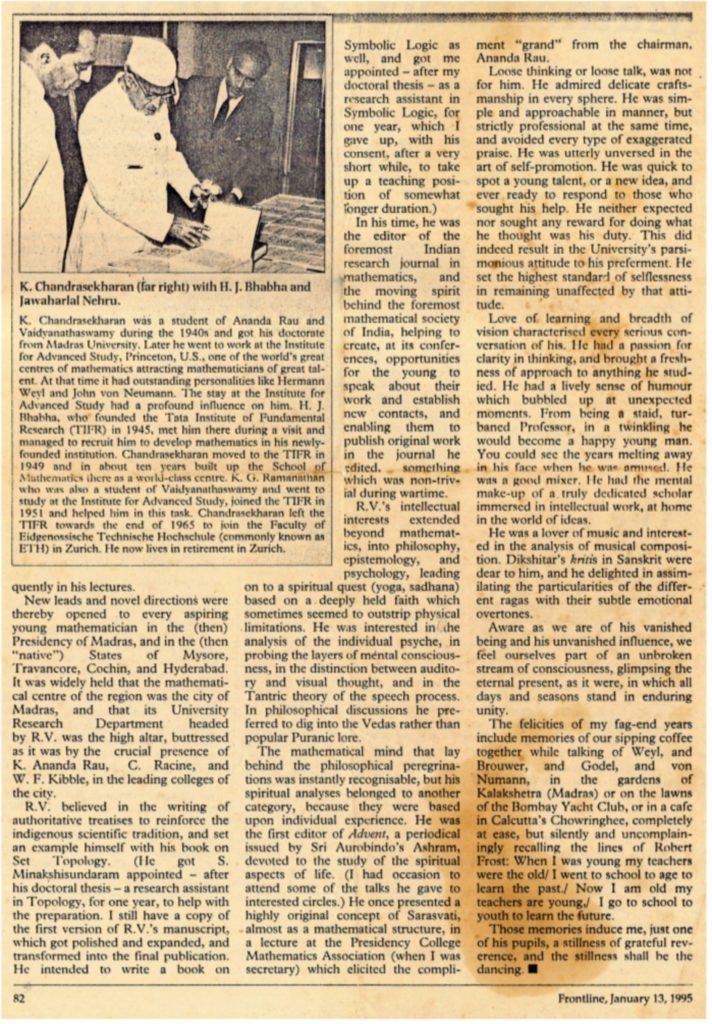
V. Balaji3
9 October 2019 marked the 125th birth anniversary of R. Vaidyanathaswamy, who headed the Research Department of Mathematics at the University of Madras for its first 25 years. In the words of his student K. Chandrashekaran, “RV played a leading role in the advancement of mathematics in India for over three decades. He created the consciousness of a cohesive national mathematical community long before India’s independence. His great achievement is not just isolated in a few outstanding papers but spread throughout his career, of rigour and development, in the service of mathematics. His name commanded respect in all corners of India not just because of his high professional competence and irreproachable personal integrity; indeed, he was looked up to as a man of culture endowed with spiritual merit.’’
In this brief article, instead of merely sketching the mathematical side of his personality, I will dwell on RV as an “integral personality”, on his pursuits which extended far beyond mathematics into the realms of spirituality and music. Using essentially a collage of his writings together with a few personal strokes, I will try to highlight multiple facets of this rare jewel. My late grandmother Kaveri Ammal, very faithfully and in her own inimitable style, gave me multiple insights into RV’s spiritual personality.
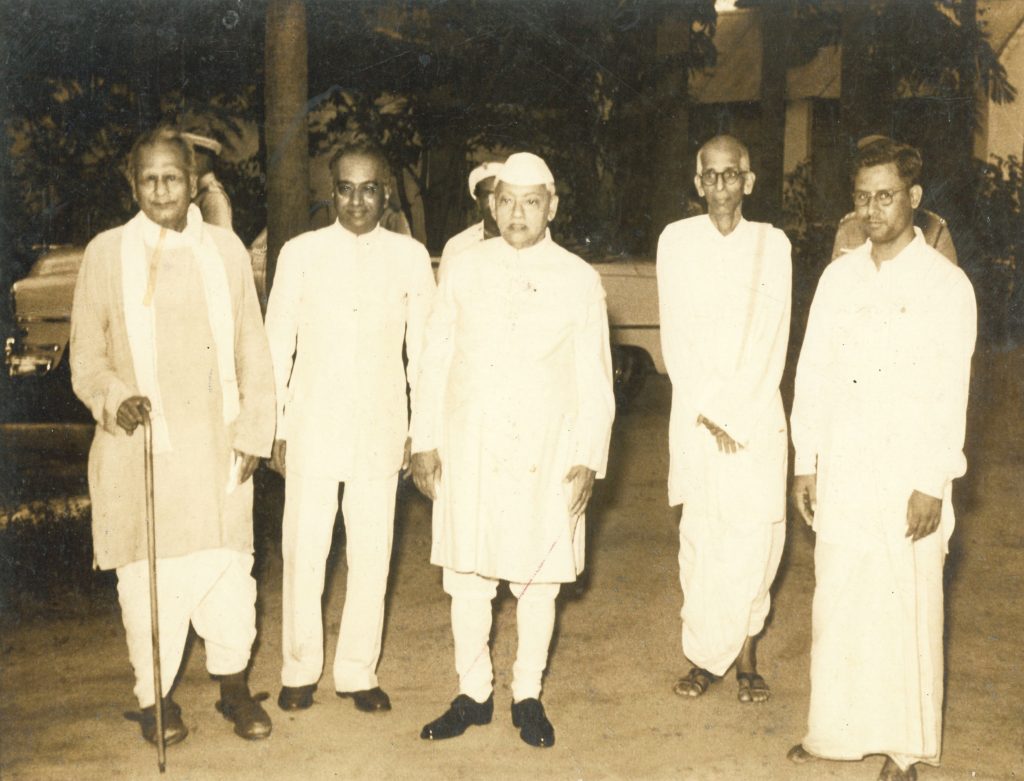
RV was a direct disciple of Sri Aurobindo and as such was influenced in all his pursuits, which included mathematics, by the vision and goal of Sri Aurobindo’s Yoga. Following the Yogic traditions, the sphere of human spirit may be divided broadly into the three realms, one of action (Karma), one of knowledge (Jnana) and one of devotion (Bhakti).
The field of action involves fashioning, structuring and building; in this field, RV gave full expression to his yogic pursuits in building and developing the school of mathematics in Madras. In the true spirit of Integral Yoga, this expression went beyond the building of this Department alone. As KC puts it, RV created the consciousness of a cohesive national mathematical community.
The second involves knowledge, reflection and contemplation which fulfils itself in wisdom and gnosis. Mathematics, with its harmonious blend of an austere exercise of pure reason and flights into intuitive domains together with an attitude of “knowledge for its own sake”, provided RV an excellent but nevertheless a limited avenue to express himself in this aspect of Yoga. It is only as a sadhaka (a practitioner) of the Integral yoga that he could give a fuller expression to this aspect.
As outer expressions of his inner experiences, he gave regular discourses on the Vedas and Tantras in the Sri Aurobindo Study Circle and wrote quite a few penetrating articles. RV’s description of the different planes of consciousness did not come from a mere intellectual learning but rather revealed a more nuanced insight and gave a spiritual geography of these worlds, something which could be provided only by a regular traveller, or an inhabitant of such rarefied realms.
In an article in the Cultural Heritage of India (published by the Ramakrishna Mission, 1938) entitled “Mathematics in Modern India”, he presents a novel perspective of Mathematics from the viewpoint of a Yogi. He speaks of “the knowledge effort in man having two orientations—towards intrinsic or individual being culminating in its upper limit God, or towards relational being achieving its inferior limit in Mathematics.” He says:
He views the formalism of Mathematics and its insight as a pole of consciousness as opposed to but equally absolute with God consciousness, and asserts that its absorption and assimilation are necessary for attaining the Purnata, the fullness of all experience.
As another example of his writing style, in a review of Sri Aurobindo’s Life Divine, he boldly attempts to encapsulate and summarise in a single sentence the profundity and complexity of the work. He writes:
As an example of his unique and original perspective on spiritual matters, in a review of a volume of writings on Sri Ramana Maharishi, RV describes the Maharishi as “a warrior at the core” and the Maharishi’s book of forty verses, “Ulladu Narpadu”, as reading “very much like the curt, military appraisal of a master-tactician planning a decisive coup.” He describes the Maharishi’s ideal as “utter Silence … that massed-up, in-gathered, pre-creative, proto-creative level of consciousness in which there is no sense of auditory or visual elements”, a description the source of which is his own inner experience.
To give expression to the Bhakti aspect of his being with its seat in the emotional being, RV delved deep into the musical compositions of Muthuswami Diskhitar, but again, as always, from the standpoint of his yogic pursuit.

In a not-too-well-known, but penetrative article on Dikshitar’s music, RV expounds his own vision of true art. He speaks of the underlying Indian value of “Divine Consciousness which, self-conscious in man, creates and aspires.” Describing this value itself as the “Universal Mother, … who is the source and repository of all other values,” he describes her as “both the content and the form of knowledge, both the subject-matter and the beauty of art.” He says:
He says eloquently, “Art not only reveals, but is an expression of the aspiration towards the value it reveals.”
Exactly 76 years ago, in February 1944, the Sri Aurobindo Ashram launched its journal The Advent, “a quarterly devoted to the exposition of Sri Aurobindo’s vision of the future”, with RV as its first Editor. It would be appropriate to close this article by quoting from the first editorial by RV.
Ourselves—An Apology
All this is perhaps true and we must always keep it well in view. And yet our attempt may not be quite superfluous. Our candle-light is not meant to replace the Sun, nor has it even the pretension to show the way to the Sun; it is more like a taper kindled from our heart of adoration and gratitude, an incense burning and offering itself, rendering back to the Source what it received from there. …
Sri Aurobindo’s vision enrings the entire domain of human preoccupations; it embraces and relumes all truths that secretly build and inspire man’s integral being.… So one line of our interest will lie in the direction of scanning and understanding human movements—spiritual, intellectual, social, literary or scientific—in the light Sri Aurobindo has shed upon them.…
To be able to create a living interest in the Master’s revelation about these abiding truths that determine human destinies, …, to turn a few hearts and minds to something that would allay all their questionings—well, that is ample achievement and we ask for no more.\blacksquare
Footnotes
-
A. Narasinga Rao (1893–1967) was at Annamalai University from 1929 to 1946. He moved to Andhra University in 1946, and to the Indian Institute of Technology at Madras in 1951. He worked mainly on aspects of Euclidean geometry, but was also interested in other fields, such as aerodynamics. He encouraged young mathematicians, and was responsible for attracting Ganapati Iyer and S.S. Pillai to Annamalai. He was the first Editor of The Mathematics Student, a journal (founded by the Indian Mathematical Society) to which mathematics teachers and students could send their contributions. He also instituted a medal, named after himself, awarded through the Indian Mathematical Society to outstanding young people.
V. Ganapati Iyer (1906–1987) too was a professor at Annamalai University. He wrote papers on many aspects of both real and complex analysis. His best work was on the theory of entire functions; in some of this work he applied methods from functional analysis to spaces of entire functions. He was among the few in India who understood Nevanlinna theory.
This is an edited version of the following article originally published in The Mathematics Student, and has been republished here with permission: A. Narasinga Rao and V. Ganapati Iyer. 1961. “R. Vaidyanathaswamy (1894–1960)”. The Mathematics Student. 1961: 1–14. ↩
- In fact, the earlier volumes of the Journal of the Indian Mathematical Society contain many results of rare beauty relating to the modern geometry of the triangle discovered by M.T. Naraniengar, V. Ramaswamy Iyer. H. Bhimasena Rao, N. Durairajan and others. ↩
- C.S. Seshadri, who did his Ph.D. with K. Chandrashekaran at TIFR, is the founding Director of the Chennai Mathematical Institute and is presently its Director-Emeritus. ↩
- V. Balaji, who did his Ph.D. with C.S. Seshadri, is Professor of Mathematics at the Chennai Mathematical Institute. As R. Vaidyanathaswamy’s grandson, Balaji carries his mathematical inheritance as well. ↩
